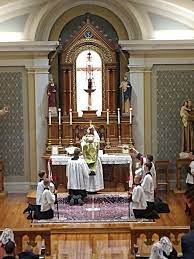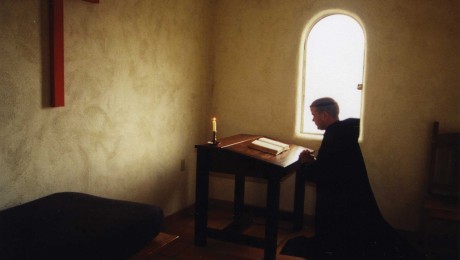
FREQUENTLY ASKED QUESTIONS (FAQ’S)
1. How are you different from traditionalist Roman Catholics or Anglican?
Very simply - but most importantly - we’re Orthodox. We hold the ancient Orthodox Catholic faith in its fullness, in union with all Orthodox believers of East and West We read and accept the Scriptures according to the unchanging tradition of the ancient Church, the seven councils and the holy fathers. Inevitably, because we exist in a homely and familiar western liturgical form, disenfranchised Roman Catholics and Anglicans (as well as other Protestants) who seek an Orthodox home where they will be welcomed and will truly feel at home, have often found a haven in Western Orthodoxy. However, we emphasize very strongly that such seekers should come to Orthodoxy not merely on the rebound from an unsatisfactory church situation, but because they have come to see Orthodoxy as the original Church of Christ, possessing the fullness of the apostolic faith and teaching.
2. What are the central issues, in our day, that pose a challenge for Roman Catholics or Anglicans who might consider entering the Orthodox Church?

Traditionalist Roman Catholics often have concerns about papal authority. In some cases, they assume Rome has lost it and they alone have preserved it. In other cases, they assume that there can be no orthodoxy apart from the Roman see and its claims. Unfortunately, these groups – in common with modernist Roman Catholics – have little appreciation of or use for Orthodoxy. As Orthodox Christians, we are able to recognize the traditional role of the bishop of Rome as first among equals – but only when he and his church return to the faith and communion of Orthodoxy, renouncing false claims and invented doctrines (e.g. papal infallibility, the Immaculate Conception, universal and immediate jurisdiction, etc.). For this reunion, we long and pray.
Traditionalist Anglicans are presently suffering through the disintegration of the worldwide Anglican Communion – a dissolution precipitated over several generations by erosions of traditional faith and morals and departures from traditional ecclesiastical order. Among these are the ordination of women, blessing of same-sex unions, and the ordination of non-celibate homosexuals. By the grace of God, Orthodoxy remains blessedly free of these departures from the “faith once received.”
Undistracted by these matters, we are able to focus on the primary work of Orthodoxy which is the worship of God, the saving of our souls, and the proclamation of the Gospel in its Orthodox fullness and purity to the whole world.
It is our joy and mission to offer a home to persons who sincerely seek Christ and the authentic church that he founded. Because our founding monks are converts themselves, our community is well acquainted with both the pain of leaving one’s old church and the joy of finding the fullness of Christ’s true Church in holy Orthodoxy – and finding there too those familiar western liturgical and devotional forms and traditions that have meant so much to us and are part of our heritage. Those traditions find themselves renewed and deepened as they are restored to their rightful place in the Orthodox Church.

3. What is your Liturgy like?
The simplest answer would be that, apart from being mostly in traditional English rather than Latin, it is almost exactly what one might have found in any liturgically proper Roman Catholic or Anglo-Catholic church or monastery in the years before the Second Vatican Council. There are changes, of course: some required to restore the rites to full conformity with Orthodox teaching (hence, for example, there is no filioque in the Creed); and some in favor of more ancient ceremonial traditions. For example, we use a profound bow where later use required the genuflection; we give communion under both species (by intinction — the Host being dipped into the precious Blood and placed on the tongue of the communicant), whereas later Roman Catholic use required withholding the chalice from the faithful. Communion is given, of course, only to properly prepared Orthodox Christians, though all are welcome to join us in our liturgies and prayers.
At a Sung Mass, which is the usual service on Sundays and Solemnities, we sing appropriate hymns and psalms, chant all of the proper parts and the Ordinary, and sing all the responses. With a brief sermon, Sung Mass usually lasts about 90 minutes.
At Low Mass, usually celebrated Monday through Saturday, everything is spoken rather than sung, though hymns and incense may be added as required. Without hymns, Low Mass usually lasts about thirty-five minutes.
Mass is sometimes entirely in Latin, though rarely on Sundays or Solemnities. But some Latin is used at every Mass — usually during the Offertory — and always for the seasonal hymn to the Mother of God that ends each service at the monastery.
Missal booklets are provided for all to assist in following and in singing the services. Most stand for the Mass, sitting for the lessons and the offertory. Others, due to age or infirmity, sit as their needs require. Here are the changes made by Rome since the Schism:
The Hours of the Divine Office - the “Work of God” as Saint Benedict calls it--are sung according to the arrangement he himself set forth in his Holy Rule in the fifth century, and thus the monastic Office is one of the oldest forms of the Hours still in use. Almost always sung in English (with occasional Latin), the psalms are sung in the eight modal chant tones, and the rest (antiphons, hymns, responsories) sung to the ancient Gregorian chants, all in traditional (what Anglicans would call “prayer-book”) English.
It is our experience that visiting Roman Catholics and Anglicans, as well as other Protestants with some liturgical experience, find themselves readily at home in our style of worship, with its prayerful, reverent, and unhurried atmosphere.

4. What are your vestments like - Eastern or Western?
On the basic and simple principle that each rite -- Eastern and Western -- has its own fullness and integrity, our vestments are entirely traditional Western vestments. Our sequence of liturgical colors, adhering to older tradition, is a bit richer in variety than the more recent Roman sequence. We basically use blue for Advent and feasts of the Mother of God, white or gold for most solemnities, red for Passiontide, Pentecost and martyrs, yellow or white for confessors, gray and reddish-purple for Lent, black for Requiems, rose for Gaudete and Laetare Sundays, and green for the season after Pentecost
Our monastic habits are also traditionally Western in style: the black tunic and belt, the black scapular and hood, and (for professed monks) the large black cowl.
5. Aren’t the Antiochian and Russian jurisdiction too ethnic for American converts?
That depends on where one is. In both of these jurisdictions, there are parishes composed mostly of American converts and the services are entirely in English. However, there are Russian parishes where one can easily feel transported back to czarist Russia, simply because they are made up mostly of Russian immigrants who are still attached to their old world language and customs, both liturgical and cultural and people dress like 19th Century peasants. In some of the Antiochian parishes, Arabic is spoken thereby excluding American converts. And other parishes are somewhere in-between.
Our calendar does contain perhaps more Russian saints than the calendars of Greek or Syrian Orthodox Churches, but these are saints dearly cherished by us - saints such as Saint Seraphim, Saint Tikhon, Saint John Maximovitch or Saint Xenia. Of course all the major pre-schism western saints are there too: Patrick, Monica, Ambrose, Bridget, Boniface, and many more saints nourished in the same liturgical Orthodox tradition we are privileged to observe at the Monastery.
It has been our experience of the Russian Orthodox Church that she is the home of many deeply holy men and women, both clergy and laity, and, in her wisest moments, she cherishes Orthodox tradition above ethnic traditions and values. Perhaps of all Orthodox jurisdictions, ROCOR has most cherished and cultivated the monastic life. Her welcome to Western Rite Orthodoxy has been a mixed one: we have encountered warm supporters, hostile critics, indifference and sometimes plain ignorance - all probably in the same proportion would find in many other Orthodox jurisdictions. But we have had been within the Russian Church since 1962, and in the Russian Church Abroad until 2018, and God has seen that we have remained loyal to our mission as entrusted to us. We hope and pray that the Orthodox Churches will more actively pursue their universal mission by widely welcoming Western Rite usage and missions. The pastoral need is great and growing, and we pray the Good Shepherd to inspire all his shepherds in every Orthodox jurisdiction to seek out all lost and wandering sheep and bring them home to the Orthodox fold.
6. How does Christminster compare to the Western Rite in the Antiochian Church?

It should first be noted that we have been blessed with excellent relations with the Antiochian Western Rite Vicariate. In fact, some of our oblates (clerical and lay) are members of the Antiochian Vicariate. Liturgically and ritually, our Liturgy is nearly identical to their Liturgy of Saint Gregory, though some of their parishes use the Saint Tikhon Liturgy, which we do not.
Our orientation is monastic where theirs is parochial, but we both provide a very open, “non-ethnic” and welcoming atmosphere to visitors seeking the authentic Orthodox faith in a western setting.
It is our hope that our good relations with the Antiochian Vicariate will only deepen and mature as we seek to bring a living and dynamic Orthodoxy to an increasingly secular world.
7. What is the connection between the Community of Mount Royal and Christminster?
When Christminster was founded, Bishop Hilarion, with the agreement of Dom Augustine of Mount Royal and Dom James of Christminster, intended the two to be autonomous, distinct, and separate, and so they have remained from the beginning. The only link between the two is the person of Dom James, who had served as Prior of Mount Royal before the establishment of Christminster. Dom Augustine remained the abbot of Mount Royal followed by Dom David. Dom James was the abbot of Christminster followed by Archbishop Anthony.
Christminster owes to Dom Augustine a debt of gratitude for providing the opportunity to further Western Rite monastic mission within ROCOR. Indeed, ROCOR itself owes a debt of gratitude to Dom Augustine for his patient and long-suffering dedication to the mission of keeping Western Rite Orthodoxy alive within ROCOR throughout many years in which he and his work went unrecognized. In recent years, both in North America and Australia, Western Rite missions have taken root within ROCOR, all of which, though having no legal or canonical connection to Mount Royal, owe to it and to Dom Augustine -- and, of course, to Archbishop Hilarion -- their opportunity to exist.